Latest Posts
SK Hynix Memory acquired Intel’s NAND flash and storage business
Intel sold its another important business at 9 billion U.S. dollars, it is the NAND flash memory business.NAND flash can make: bulk usb drives、Bulk sd cards、micro sd cards、DRAM and SSD NAND Storage. SK Hynix memory will take over the production line of NAND flash.

The Acquisition of Intel’s NAND Flash Memory Business by SK Hynix
Headlines
- SK Hynix memory will spend US$9 billion on the acquisition of Intel’s NAND flash memory and storage business,which covers Intel’s NAND SSD business, NAND components, wafer business, and its NAND flash memory manufacturing plant in Dalian, China.
- SK Hynix is one of the world’s leading semiconductor companies. With the aim of strengthen its competitiveness in NAND flash memory solutions in mind, it has developed the memory ecosystem, and thereby create more benefits for its customers, partners, company employees and shareholders.
- According to Intel, the Optane TM business will be retained, and the funds obtained in this transaction will be invested in key businesses with long-term growth potential.
This is another major transaction in the global semiconductor field. The former one refers to the fact that NVIDIA acquired ARM at US$40 billion.
The Korean company SK Hynix is the buyer in this transaction; it is also an important player in the NAND flash memory field. Therefore such purchase is a mark that South Korean companies are getting increasingly stronger in the NAND flash memory field, .
Then, what impact will this transaction have on the Chinese semiconductor industry?
This transaction involves Intel’s Dalian factory in China.
SK Hynix and Intel jointly announced the above-mentioned signing agreement on October 20th, Beijing time .
In line with the agreement, SK Hynix will acquire Intel’s NAND flash memory and storage business at a price of US$9 billion. The acquisition covers Intel’s NAND SSD business, NAND components, wafer business. So does Intel’s NAND flash memory manufacturing plant in Dalian, China.
According to Leifeng.com, Intel’s Dalian plant in China is Intel’s only wafer manufacturing plant in Asia. Intel invested and established it in September 2007 and officially put it into production in 2010,
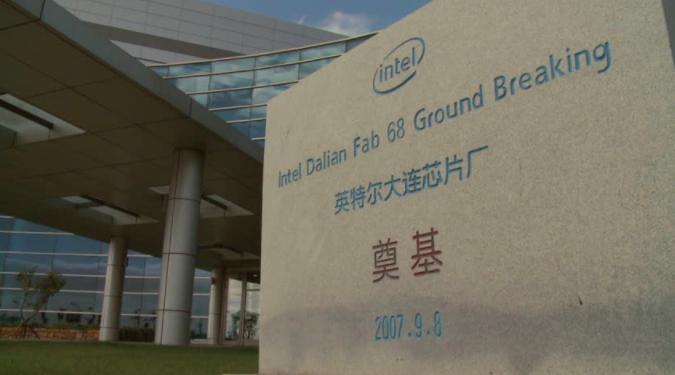
In 2015, Intel decided to invest US$5.5 billion to upgrade this plant for non-volatile storage technology. This base was officially adding it into production in 2016. In May 2017, Intel released a new data center-level solid state disk using 3D NAND technology at its Dalian plant. Intel’s most advanced 96-layer 3D NAND product was also under production in Dalian in September 2018.
SK Hynix Memory acquires more wafer plants
Now that SK Hynix has acquire Intel’s NAND flash memory and storage business. Also, it will take charge of Intel’s only wafer manufacturing plant in China.
It is notable that Intel will still retain its unique Optane business, despite the sale of the NAND flash memory business.
Based on the agreement between SK Hynix and Intel, both of them will spare no efforts to obtain the required government licenses by the end of 2021. And regulatory agencies issued such licenses in the United States, the European Union, China, and South Korea, etc.
According to the agreement, SK Hynix will, after obtaining the relevant licenses as well as paying a consideration of USD 7 billion for the first phase to Intel, acquire the NAND SSD business (including NAND SSD-related intellectual property rights and employees) and the factory in Dalian, China.
And the final delivery will be ready in March 2025. By that time, SK Hynix can acquire other related assets from Intel, including intellectual property rights related to the production and design of NAND flash memory wafers, R&D personnel, and employees in the Dalian factory in China, by paying a balance of US$2 billion to Intel.
Meanwhile, it is stipulated in the agreement that Intel can continuously manufacture NAND wafers at the Dalian flash memory manufacturing plant and retain the intellectual property (IP) related to the manufacture and design of NAND flash memory wafers until the final delivery date.
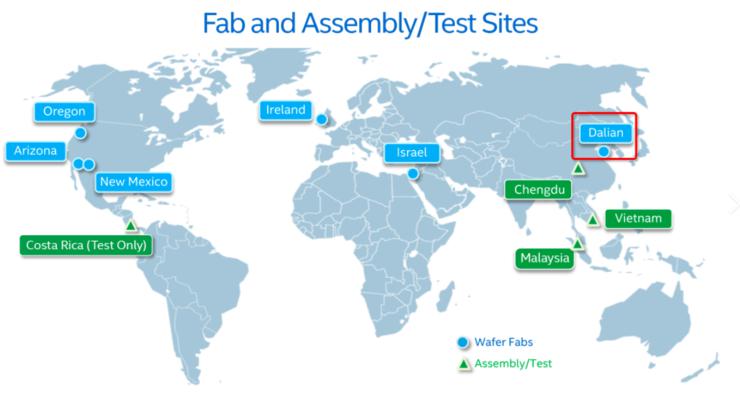
Both parties hope that SK Hynix can enhance its competitiveness of storage solutions including enterprise-grade SSDs in the rapidly growing NAND flash memory field, and further develop into one of the industry’s leading global semiconductor companies after this transaction.
Why does Intel sell it to SK Hynix Memory?
Actually, it is not surprising that Intel will sale its NAND flash memory business.
Since February 2019, when Bob Swan officially taking the post of Intel’s CEO, he has been dedicated to promoting Intel’s business adjustment and working for better financial situation. Why? Bob Swan, having previously served as Intel’s CFO, is good at looking at issues from a financial perspective.
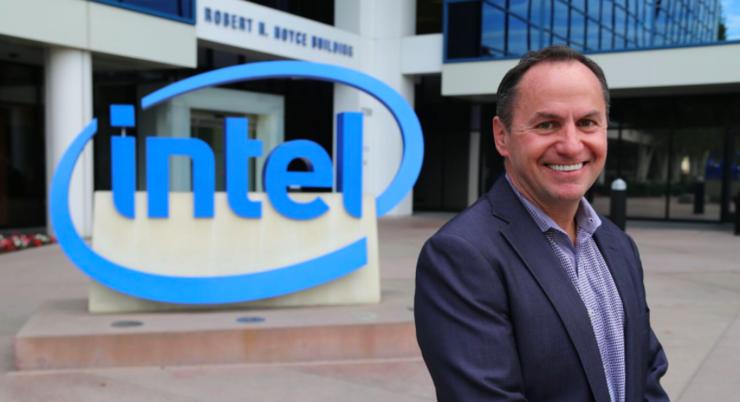
In fact, Bob Swan has been in charge of Intel for more than two years (including his tenure as the interim Intel CEO), during which he has already formed his ideas of conducting the Intel modem business.
FastCompany reported that he used to feel conflicting why Intel did not divert its attention to other more profitable businesses. Then in April 2019, when Apple announced a settlement with Qualcomm, Intel announced its withdrawal from the 5G modem business on the same day.
Then comes the sell of most of the modem business by Intel to Apple in July 2019.
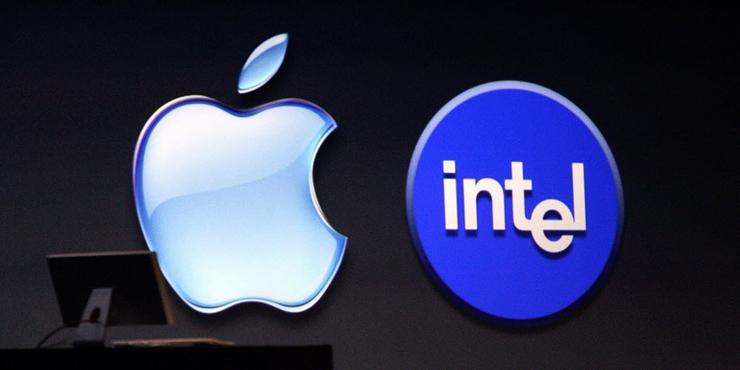
Based on the above-mentioned behavior, it is not surprising that the NAND flash memory business will be cut by Bob Swan in 2020.
Intel focus more on AI, 5G and automatic driving
According to Leifeng.com, as of June 27 this year, an operating profit of approximately $600 million and approximately US$2.8 billion in revenue has been made by Intel’s NAND business for Intel’s Non-volatile Memory Solutions Group (NSG) in the first half of this year.
Being a world leader in the semiconductor industry, Intel is also equipping with advanced technology. Such as industry-leading NAND SSD technology and a quadruple level cell (QLC) NAND flash product line.
Intel CEO Bob Swan has made his comment on this sale : Though this transaction, we are able to focus more on investing in technologies with differentiated characteristics. So that we can play a more important role and create considerable returns for our investors.
Intel also stated that those funds obtained from this transaction will be uesd to develop industry-leading products. Meanwhile they will strengthen its business with long-term growth potential. Such as artificial intelligence (AI), 5G networks and intelligent, automatic sriving related devices.
Changes in the NAND flash memory field: South Korea takes the lead while China is catching up.
A significant impact will be excerted on the global NAND field by this transaction between Intel and SK Hynix.
The data released by TrendForce’s Semiconductor Research Division under TrendForce shows that in the second quarter of 2020, in the global NAND Flash industry:
- The first place went to Samsung, whose revenue accounted for 31.4%;
- The second place Kioxia, revenue accounting for 17.2%;
- The third place Western Digital, revenue accounting for 15.5%;
- The fourth place SK Hynix, revenue accounting for 11.7%;
- The fifth place Micron, revenue accounting for 11.5%;
- The sixth place Intel, revenue accounting for 11.5%
-
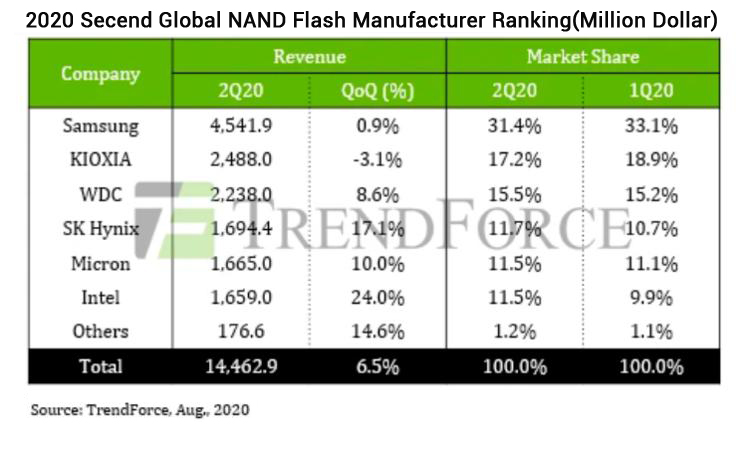
Based on the above data, HK Hynix will boast more than 23% of global market share in this field. This is being the world’s second largest in this field. As long as it succeed in acquiring the Intel NAND flash memory business.
—To this end, South Korean companies will account for half of the global NAND revenue.
And where is the Chinese NAND going Vs SK Hynix Memory?
Currently, when it comes to the NAND, Chinese manufacturers are still in the catching-up stage. As the revenue ranking is still relatively low, in the list of Others.
However, the domestic storage company—Yangtze River Storage Technology Co., Ltd. (YMTC) in Wuhan has been developing very quickly and has achieved major success. It is being the leader in domestic NAND flash memory.
In April 2020, YMTC had successfully developed the 128-layer QLC 3D NAND flash memory (X2-6070). It is also China’s first 128-layer 3D NAND flash memory chip. Furthermore, this chip is with the highest storage density per unit area among the known models in the industry. So does the highest I/O transfer speed (1.6G/s) and the highest single NAND flash memory capacity (1.33Tb).











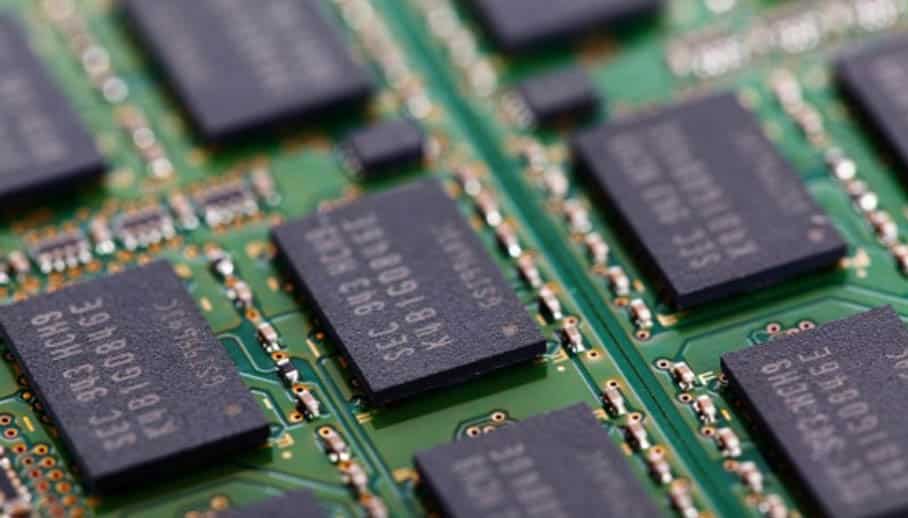
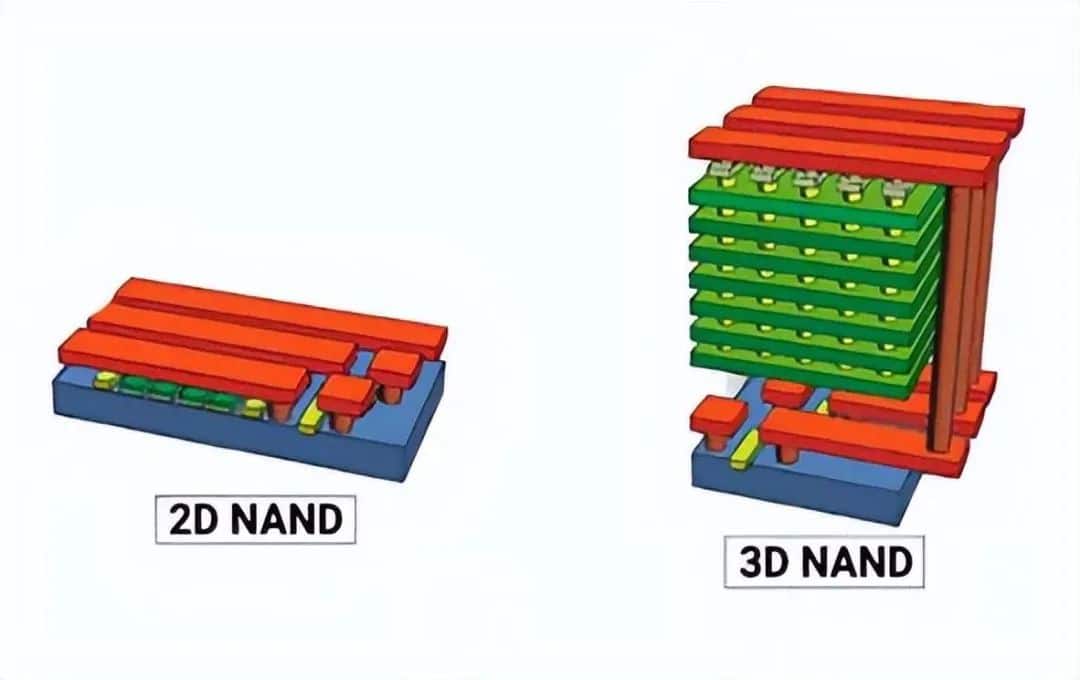
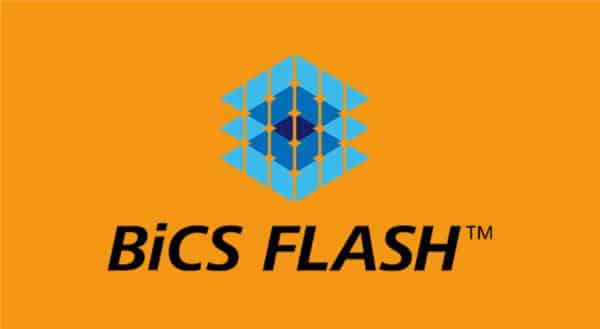

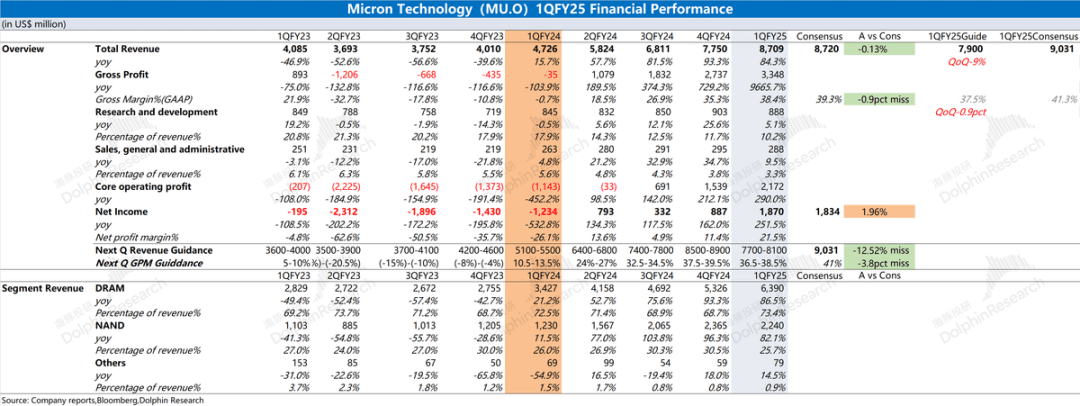
Leave a comment